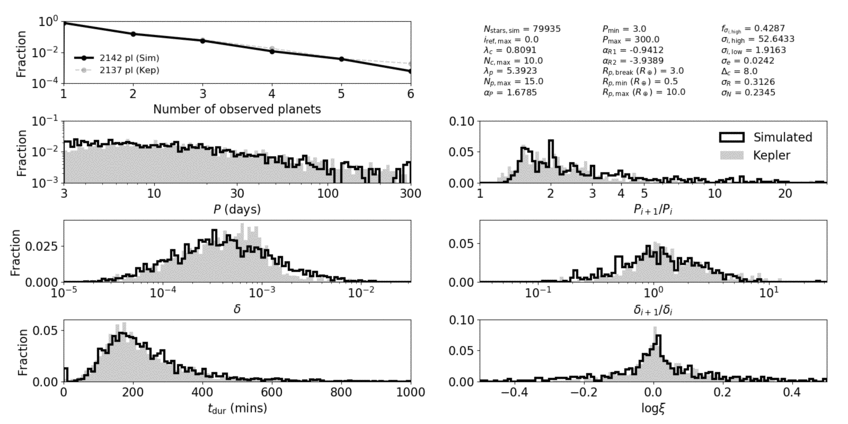Architectures of Exoplanetary Systems. II: An Intrinsic Relation between Planetary System Occurrence and Spectral Type for Kepler's FGK Dwarfs
The Kepler mission observed thousands of transiting exoplanet candidates around hundreds of thousands of FGK dwarf stars. He, Ford, & Ragozzine (2019) (arXiv:1907.07773) applied forward modelling to infer the distribution of intrinsic architectures of planetary systems, developed a clustered Poisson point process model for exoplanetary systems (SysSim) to reproduce the marginal distributions of the observed Kepler population, and showed that orbital periods and planet radii are clustered within a given planetary system. Here, we extend the clustered model to explore correlations between planetary systems and their host star properties. We split the sample of Kepler FGK dwarfs into two halves and model the fraction of stars with planets (between $0.5-10 R_\oplus$ and 3--300 d), $f_{\rm swpa}$, as a linear function of the Gaia DR2 $b_p - r_p$ color. We find that the occurrence of these planets rises significantly towards later type (redder or higher $b_p - r_p$) stars, with a slope of $df_{\rm swpa}/d(b_p - r_p) = 0.53_{-0.19}^{+0.19}$. The fraction of stars with planets increases from $f_{\rm swpa} = 0.34_{-0.11}^{+0.08}$ for F2V dwarfs to $f_{\rm swpa} = 0.91_{-0.18}^{+0.09}$ for mid K-dwarfs. About half ($f_{\rm swpa} = 0.54_{-0.13}^{+0.08}$) of all solar-type (G2V) dwarfs harbour a planetary system between 3 and 300 d. While this linear $f_{\rm swpa}(b_p - r_p)$ model is simple, it can closely match the observed multiplicity distributions of both bluer and redder halves in our sample, suggesting that the architectures of planetary systems around stars of different spectral types may be similar aside from a shift in the overall fraction of planet hosting stars.
PDF Abstract